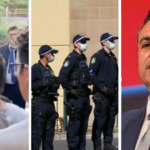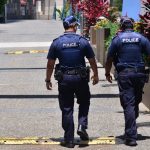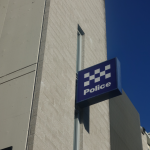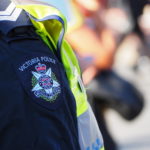Thin-Skinned, Heavy-Handed Policing: A Worldwide Trend

Seven police officers rushed the home of a 16-year old autistic girl on Monday 7 August 2023 and performed a heavy-handed arrest on the teen for making an “offensive homophobic comment” towards one of the officers, before dragging the girl out kicking and screaming.
The incident happened in Leeds in the UK, but it was captured on phone video, posted online, and has gone viral on social media, creating a surge of outrage – not only at the ‘heavy handed’ police response, but also concerns that ‘mob policing’ and ‘police overreach’ are becoming an all too common sign of the times, with police feeling entitled to instill fear and uncertainty during their interactions with the general public.
While the video shows only the confrontation and arrest in the girl’s home, police have issued further information about the incident since it occurred last week.
Police say that the girl’s family called police shortly after midnight because they were concerned that she was reportedly intoxicated and putting herself at risk in Leeds city centre. Officers found the young woman and took her home.
‘Homophobic’ remark
While at home, the 16-year-old allegedly made remarks to a police officer that she “looked like my lesbian nanna,” and police announced that they would be arresting her for allegedly committing a ‘homophobic public order offence’.
In the video, the girl can be seen cowering in a cupboard while her distressed mother tries to explain that she has Autism (Autism Spectrum Disorder ASD) and meant no offence by the remark because the comment was made in reference to her grandmother, who is a lesbian and is married to a woman.
ASD is a form of neurodiversity. Often people with ASD have challenges with social skills, speech and communicating with others.
Further, the girl’s mother says she asked officers not to pull at the teen’s arms because she has scoliosis and a twisted spine – an instruction police officer’s ignored. In the video, the Mother goes on to plead with police as her daughter is taken away by officers.
In the video the mother says: “She’s autistic” to which a female police officer responds: “I don’t care.”
Charges dropped, police officers under investigation
In a statement, West Yorkshire police said: “In relation to an incident in Leeds on Monday, where a 16-year-old girl was arrested on suspicion of a homophobic public order offence, West Yorkshire Police has now reviewed the evidence and made the decision to take no further action.
“This concludes the criminal investigation and immediately releases the girl from her bail.”
However, as a result of the video going viral, widespread community concerns over the actions of officers, and a complaint made by the girl’s family, the officers involved are now under investigation.
Assistant Chief Constable Oz Khan has said: “Without pre-empting the outcome of the ongoing review of the circumstances by our Professional Standards Directorate, we would like to reassure people that we will take on board any lessons to be learned from this incident.
“We do appreciate the understandable sensitivities around incidents involving young people and neurodiversity and we are genuinely committed to developing how we respond to these often very challenging situations.”
And all of that sounds very positive.
Intimidation and traumatisation
However, it is once again, an incident of “shutting the gate after the horse has bolted.” And a wider discussion needs to be had about “bullies in uniform” – who despite being paid to protect and serve their communities have a tendency that is becoming increasingly common, to traumatise them instead.
This is not unique to the UK. In Australia, groups of officers are routinely involved in arrests. “Mob policing” is a very intimidating tactic, particularly considering that officers are also typically armed – with capsicum spray, tasers and in some cases, guns.
Offences against bigotry in New South Wales
The criminal laws of the United Kingdom take incidents of bigotry far more seriously than the laws in our state.
The closest criminal law in New South Wales to a ‘homophobic public order offence’ in the UK is found in the recently enacted section 93Z of the Crimes Act 1900 (NSW).
That section is titled ‘publicly threatening or inciting violence on grounds of race, religion, sexual orientation, gender identity or intersex or HIV/AIDS status’ and prescribes a maximum penalty of three years in prison where the prosecution is able to prove beyond a reasonable doubt that:
- A person intentionally or recklessly threatened or incited violence towards another person or group,
- The person did so by way of a public act, and
- The person did so on grounds of the other person’s or group’s race, religious belief or affiliation, sexual orientation, gender identity, intersex status, or HIV or AIDS status.
The offence would not encompass the conduct of the 16-year old girl because there was no threat or incitement of violence.
Definitions under section 93Z
Under the section, a ‘public act’ includes:
- Any form of communication to the public, including speaking, writing, displaying notices, playing recorded material, and broadcasting and communicating through social media and other electronic means,
- Any conduct observable by the public, including actions, gestures, wearing or displaying clothing, signs, flags, emblems or insignia, and
- Distributing or disseminating any matter to the public.
An act may be public even if it originates or occurs on private land.
‘Race’ includes colour, nationality, descent and ethnic, ethno-religious or national origin.
‘Religious belief or affiliation’ means holding or not holding a religious belief or view.
‘Sexual orientation’ means a person’s sexual orientation towards:
- Persons of the same sex,
- Persons of a different sex, or
- Persons of the same sex and persons of a different sex.
‘Gender identity’ means the gender related identity, appearances, mannerisms or other gender related characteristics of a person without regard to the person’s designated sex at birth.
‘Intersex status’ means the status of having physical, hormonal or genetic features that are:
- Neither wholly female nor wholly male,
- A combination of female and male, or
- Neither female nor male.
‘Violence’ includes violence towards persons as well as property.
To establish guilt, the prosecution does not need to prove that:
- A person’s views were incorrect or correct, or
- Any person formed a particular state of mind or carried out a violent act.
Proceedings for the offence can only be commenced with the approval of the DPP.
Legal defences to section 93Z charges
Legal defences to a charge brought under section 93Z include:
- Duress,
- Self defence, and
- Necessity.
In the event a person is able to raise evidence of any such defence, the onus is then place on the prosecution to disprove that defence beyond a reasonable doubt.
The defendant is entitled to an acquittal if the prosecution is unable to do this.
The use of force during arrest in New South Wales
Under section 231 of the Law Enforcement (Powers and Responsibilities) Act 2002 (NSW), police officers are permitted to use “such force as is reasonably necessary” to arrest a person or stop them from fleeing an arrest. However, as has been discussed many times before, what actually
constitutes a “reasonable” level of force can be difficult to determine – and it will depend on what type of force is necessary to restrain.
Anything beyond that level of force can be cause for a formal complaint to be made against police, and can potentially amount to a criminal offence, although whether that can be proven in a court of law is a separate issue – determinations can differ quite markedly, depending on the circumstances of the arrest.
In March 2021, the police officer who was charged with assault after striking a restrained, naked teenager 18 times with a baton in Byron Bay, was found not guilty. The teenager was naked, placed in handcuffs and restrained by four police officers, three of whom were cleared of any wrongdoing by the Law Enforcement Conduct Commission (LECC)’s investigation of the incident, despite the boy being treated in Tweed Heads hospital after his arrest.
Earlier this year, an officer who used the ‘leg sweep’ on a teenager while arresting him was found guilty of assault when the Magistrate determined that the tactic was not a reasonable use of force and the teen was complying with the arrest.
In 2018, New South Wales taxpayers footed the bill for a $124,000 compensation payout after NSW police were ordered to pay a teenager they brutally arrested in the Blue Mountains. Officers were found to have engaged in assault and battery, false imprisonment and to have also conducted a malicious prosecution.
Filming incidents offers some protection
However, communities are holding police to account in their own way, by filming incidents which they believe are unjust, and posting them online.
This type of video evidence can be useful in court if necessary too, because while police in New South Wales are issued with body cameras, they are not always activated. And while police may try to prevent members of the public filming them, they have no legal right to do so unless the filming results in police being hindered from doing their job.
In addition to this, police are not allowed to confiscate cameras and recording equipment, delete images or request that the members of the public delete images on their behalf.







